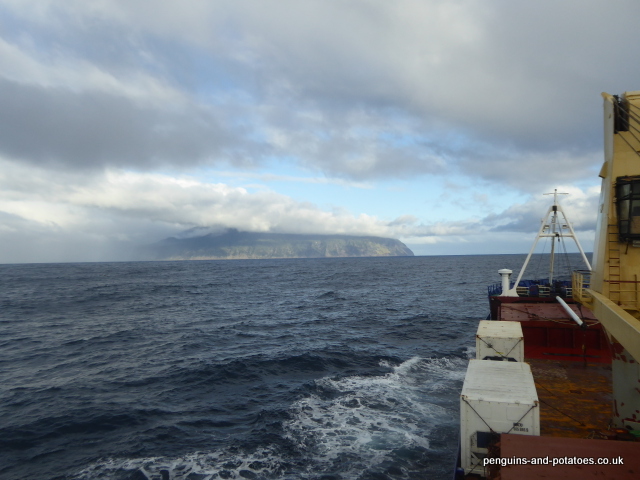Sixteen months ago, when we told family and friends of our decision to go and work on the most remote inhabited island in the world, there was a mixed reception. There were those who applauded this adventurous move, particularly at our advanced ages. And there were those who could not understand how we could consider taking the risk of going to work in such a remote place, particularly considering our ages and the possibility of needing medical facilities beyond what is available here. We chose to take the job with our eyes open, and with a degree of stoicism.
The medical facilities here are of course very limited. That is what you would expect on an island with a resident population of only 260 people. The other element of course is the extreme remoteness of the island. Around the year, about 8 cargo ships visit us from Cape Town, which is a voyage of some 1,600 miles. All our freight comes from Cape Town, and that city is the natural ‘first port of call’ for the islanders. The island even owns and manages a house – Tristan House – where islanders can stay if they are in Cape Town, for example for medical reasons.
As may be imagined, there are very strong links between the health facilities on Tristan and the medical facilities in Cape Town. There is a steady flow of people travelling to Cape Town for all sorts of operations and medical checks, as well as expatriates arriving to take up their contracts or to go on leave. This whole operation takes a huge amount of co-ordination – the cargo ships that come here have limited berths for passengers, and most often there are more people seeking a berth than available berths. Indeed, if anyone has a booking it is always provisional – there is always the risk of being bumped from a ship because of someone coming in with a higher priority.
At any one time, there is one or generally two expatriate doctors on Tristan. These are often people with experience some way beyond that of a normal GP, including some surgical experience in order to be able to cope with the occasional bone fracture or appendectomy.
It is within this background that on one Friday in early April I presented myself to one of the doctors, because of some health concerns that had just arisen. After a few tests, the doctor made a provisional diagnosis of something relatively straightforward, but without access to highly specialised equipment there remained the risk of one particular cause that would have been far more serious.
The following Monday, things moved on dramatically. The medical team here had done their homework, and the ship that was here at anchor was due to leave on Wednesday, and had a spare berth available. Better still, the same ship was due to leave Cape Town for Tristan about ten days after arriving there, and there was a spare berth on that return sailing. The easy decision was to go back to Cape Town as a medivac, to get things properly checked out. The difficult decision was whether to go on my own, or whether both of us should go. We decided that I should go on my own.
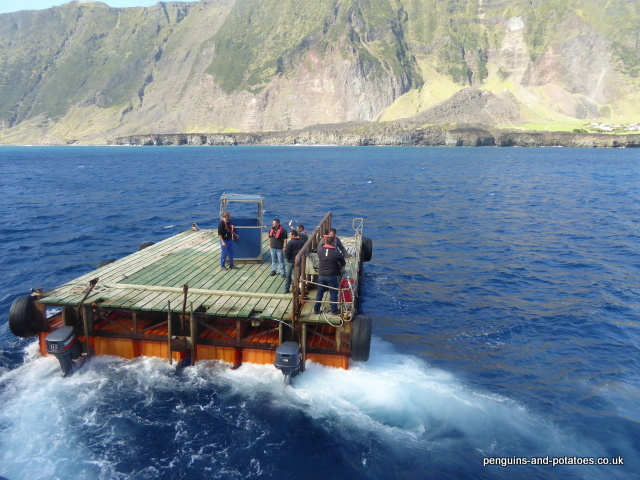
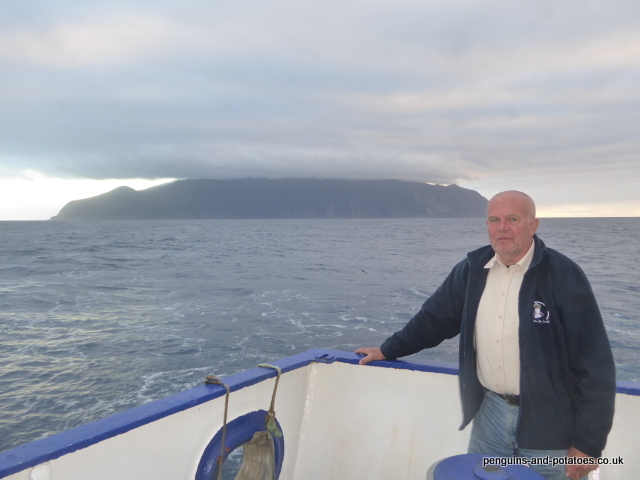
The ship that was here was the same one that we came out on in November – the Baltic Trader. This is not known for being the fastest ship in the world, particularly when the wind is on the nose. Unfortunately, in spite of the normal prevailing winds being westerly we had easterlies for the whole crossing, and instead of the expected 8 days we took 11 days to get to Cape Town, eventually docking around 8.30 on the Saturday evening. The manager of Tristan House also acts as guide and transport provider for the people from the island, and he (together with minibus and trailer) had his time cut out taking people through passport control in the port, and then on to wherever they were staying. This was a particularly daunting task because one couple were travelling with a vast amount of luggage, that on its own filled the trailer. I ended up on the third load, and to cut a long story short it was 1.30 on the Sunday morning before I arrived at the place that had been booked for me.
The place was awful. It had been booked online from the office in Tristan through a well-known global B&B agency, but seemingly the information it had online did not show the room that I had which was evidently the servant’s room from the old days of apartheid, with a minute room opening onto the car-port, and a separate shower-room that was accessed through the car port, which in turn was open to the street.
The sole advantage of this place, in the Gardens area of Cape Town, was that it was convenient for the manager of Tristan House to take me to the hospital for the beginning of my tests, at 6.30 on the Monday morning.
The hospital to which I had been referred was the Groote Schuur, made famous on 3rd December 1967 as being the place in which Dr Christian Barnard performed the world’s first heart transplant.
I cannot speak more highly of the treatment I received at the Groote Schuur. The Professor and his team at the department that was following my case arranged test after test, keeping me up to speed all the time as to what they were finding and what they were deducing. I have heard horror tales from people in the UK, who for example had to wait three weeks for the results and interpretation of MRI scans. No such nonsense in the Groote Schuur – the results of all tests that I had done were made known to me within a couple of hours, at the latest. Impressive.
After a couple of days, I had the final, confirmed results that I was hoping for – the worst case serious diagnosis was ruled out. There was every indication that life would go on!
Once the hospital had finished with me, I had some days left to me until I had to be ready for the return ship. My priorities had changed. I no longer needed to be within reach of the hospital. I needed to get out of the hovel and into a hotel where I had some simple facilities, including WiFi . So I moved into a hotel within walking distance of the V+A Waterfront. Even though the following few days included a holiday weekend, I was able to do quite a number of work visits and, much more important, I was able to spend some solid time researching on the internet (which is virtually impossible to do back on the island). I was also able to explore and relax, all part of the process of moving on from the reason for being in Cape Town in the first place.
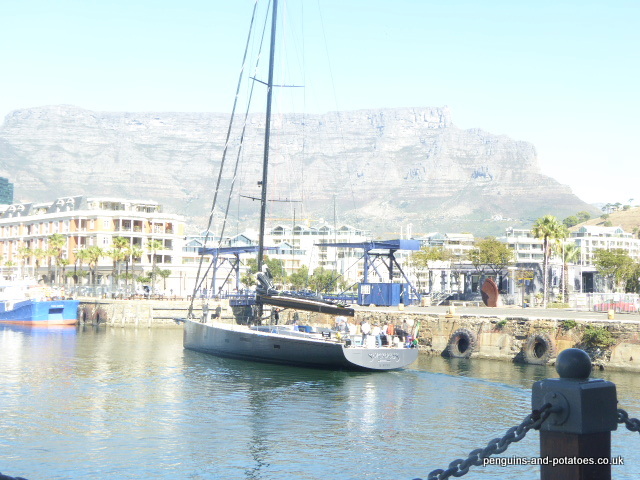
Within a short time, I was due to re-board the Baltic Trader. A big cruise ship left the port ahead of us, and then we headed off for our 1600 mile crossing. We had the wind in our teeth the whole time, with some quite heavy conditions. For a period our speed was down to 1.3 knots, and overall it was 14 days before we arrived back at the anchorage off Tristan da Cunha. It was good to be home!
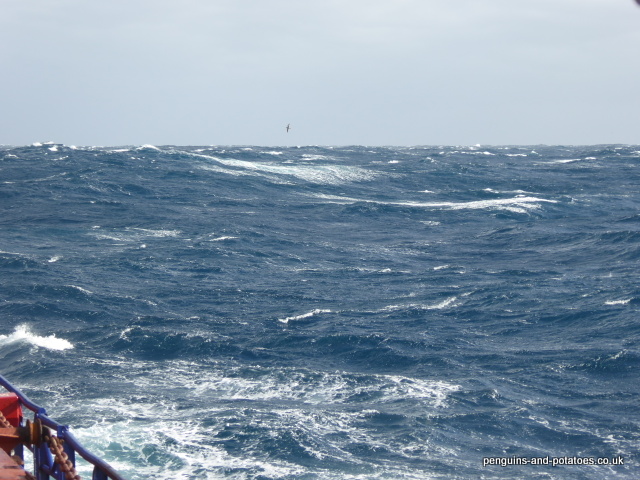
So, it was 36 days (11 days out, 11 days there, and 14 days back) all for a couple of days of tests. That is the reality of being a medivac from the world’s most remote inhabited island!
